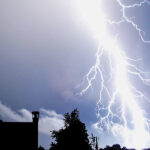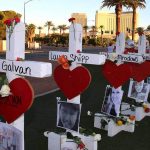Orlando, Florida is a town built on crowds, a sea of humanity in juxtaposition with what would otherwise be a lush Jurassic world. Considered the “theme park capital of the world,” the area is home to such family-friendly attractions as Walt Disney World and Universal Studios. It’s also home to the mammoth campus of the University of Central Florida and is an outpost of the ever-expanding Electric Daisy Carnival empire. The area also has the less-inviting distinction of being the “lightning capital of the United States,” with an astounding 1.4 million lightning strikes resulting in an average of 10 deaths and 30 injuries annually.
Faced with the ever-present threat of severe weather, it’s no surprise that public and private institutions alike have been proactive in exploring measures designed to mitigate the potential for lightning strikes at public assembly facilities, from early streamer emission terminals to experimental laser-powered redirection systems. Unfortunately, the effectiveness of these measures are still a matter of some debate, with many doubting if they’ve actually been able to reduce the total number of lightning strike casualties.
The limited success of these technologies drives home a harsh truth. At this point in time, as technologically advanced as we consider ourselves, there is currently and clearly nothing that can completely eliminate the potential of a lightning strike. For organizers of outdoor events, the focus should therefore be a robust understanding of the risks presented by lightning and an investment in the preparation to respond quickly and effectively.
A Serious Threat
“Lightning is very dangerous for outdoor productions,” says Michael Chapman, meteorologist at the National Center for Atmospheric Research and co-founder of Perfect Storm, which specializes in providing personalized weather strategies for events and venues. “When lightning is nearby, it tends to want to strike through the tallest body available. Large metal structures, such as a tent or stage, are obvious targets.”
Andy Bailey, Warning Coordination Meteorologist for the National Weather Service and instructor for the Event Safety Alliance’s Severe Weather Summit states, “When it comes to lightning, there is simply no safe place outside. Additionally, temporary structures such as tents offer little to no protection from lightning. As a result, it’s absolutely critical for any outdoor event and for the individual to have a solid plan in response to the approaching potential for lightning.”
The value in planning for lightning was evidenced this past June, when 33 people were injured by two lightning strikes during the overnight hours at Germany’s Rock am Ring festival. With more than 90,000 performers, backstage workers and overnight campers in attendance, these strikes could have been catastrophic. Thankfully, proactive communication and sheltering measures by festival organizers limited the scope of the casualties, with none of those affected suffering permanent injuries. There’s little question that in this instance, having and executing a well-constructed plan helped to save lives and minimize the scope of the incident.
Developing a Plan
Preparing for severe weather emergencies (including lightning) should occur well before you’re faced with an actual threat. Developing a severe weather action plan for your event is the most important step one can take to ensure a timely and effective response.
“Know who is making the decision on site, what to do when weather threatens, where you are taking people to safety and how long it takes to get there,” said Dr. Kevin Kloesel, University of Oklahoma professor, meteorologist and expert on weather-impact decision making.
At a minimum, your plan should establish an unambiguous chain of command for decision making. It should also outline what steps should be taken when faced with reasonably-foreseeable weather threats, how long it will take to execute those predetermined procedures and how you will communicate these actions to your audience and crew.
Although there is no single “correct” method for outlining these actions, a weather decision matrix is a simple, easily understood tool that provides a visual representation of expected actions based upon pre-established weather “triggers,” such as lightning, wind speed or hail. Triggers are determined based on factors specific to your event, such as the environment, attendance and production elements. As the severity of these triggers increases, so too does the degree of response. For example, your plan may indicate that in the event of a lightning strike within 10 miles of the venue, your team should be notified to prepare for a possible evacuation of the area, while a strike within six miles would trigger an actual evacuation (note: lightning can and does reach out from a storm’s center as far as, and sometimes further than, six miles). What results is a one-page, color-coded reference sheet that helps to minimize response times and the need for improvisation in your decision making.
It’s important to note that your plan will rarely be “one size fits all.” Your matrix may need to be adjusted regularly as conditions warrant. For example, if your event site has limited fixed infrastructure, the safest sheltering option for your attendees may be their personal vehicles. This would likely increase the facility’s evacuation time, resulting in a need to increase your lightning strike perimeter for that event. You’ll want to communicate with other entities involved in the event ahead of time to discuss your plan and resolve any conflicts that may exist between each party’s existing protocols. Ideally, load-in should start with everyone on the same page, knowing who will be responsible for making the call when threats arise and how they, as individuals, will respond.
Watching the Skies
Your ability to effectively execute your plan relies greatly on the quality of your intel. The National Collegiate Athletic Association (NCAA) Sports Medicine Handbook recommends that NCAA properties identify a single, knowledgeable person responsible for monitoring weather forecasts and develop a consistent working relationship with their local National Weather Service office. Given the complexity of weather forecasting, the Event Safety Alliance recommends that outdoor event organizers employ a professional meteorological service whenever possible. Services such as Weather Decision Technologies use expert meteorologists either onsite or from the forecast center to focus specifically on your event’s physical address and threats specific to your event and can provide up-to-the-minute notification via phone, text and email.
“The National Center for Spectator Sports Safety and Security is now recommending that all intercollegiate and interscholastic athletics events have an on-site meteorologist,” said Dr. Kloesel. “For smaller events, employing a dedicated off-site meteorological service can be an effective alternative.”
Knowledge is Crucial
Finally, all members of your team should have a working knowledge of your weather action plan. From the production team to the ushers, everyone on-site should be properly trained and knowledgeable in how to perform their specific function when the call to action is made. While verifying the knowledge of individual employees can be difficult (particularly at events utilizing temporary or seasonal staff), reiterating procedures to staff at the start of each event should become common practice. It may also be helpful to develop incident-specific “cue cards” for each employee, which outlines their response in the event of an evacuation or shelter-in-place incident.
Lightning is one of the most underestimated, unpredictable and deadly hazards facing outdoor events. Despite manufacturers’ claims to the contrary, no current technology has proven to prevent lightning strikes from occurring. Rather than investing money in the idea of a lightning-free environment, event organizers should invest time in ensuring that all parties know the plan and are prepared to react when faced with the threat.
“Planning for the eventuality of something dangerous to occur and knowing with confidence how to respond is the most cost-effective means to producing a safe event,” states Jim Digby, chairman of the Event Safety Alliance and Linkin Park production manager. “Use experts wherever possible, ensure the credibility of your intel and your team’s ability to react effectively and you’ll stand a much better chance of minimizing or eliminating a catastrophic outcome.”
Jacob Worek, an event safety consultant in Portland, OR, has been supporting the Event Safety Alliance’s educational mission and communication efforts since 2013.

